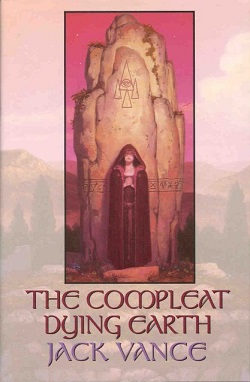
Dying Earth is a fantasy series by the American author Jack Vance, comprising four books originally published from 1950 to 1984. Some have been called picaresque. They vary from short story collections to a fix-up, perhaps all the way to novel.
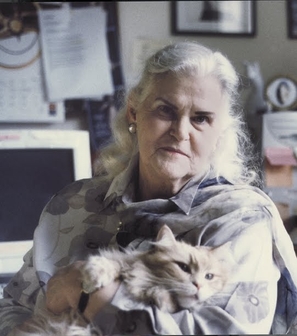
Anne Inez McCaffrey was an American writer known for the Dragonriders of Pern science fiction series. She was the first woman to win a Hugo Award for fiction and the first to win a Nebula Award. Her 1978 novel The White Dragon became one of the first science-fiction books to appear on the New York Times Best Seller list.
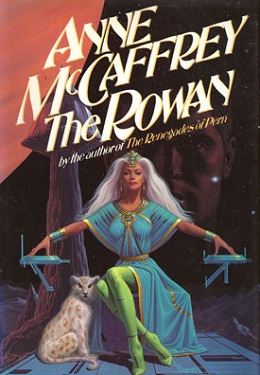
The Rowan (1990) is a science fiction novel by American writer Anne McCaffrey, the first book in The Tower and the Hive series. It is set in the universe of the "Pegasus" trilogy, against a backdrop of a technologically advanced society in which telepathy, psychokinesis and other psychic talents have become scientifically accepted and researched. Telekinetic and telepathic powers are used to communicate and teleport spaceships through space, thus avoiding the light barrier and allowing for the colonization of other planetary systems.

Pebble in the Sky is a science fiction novel by American writer Isaac Asimov, published in 1950. This work is his first novel — parts of the Foundation series had appeared from 1942 onwards in magazines, but Foundation was not published in book form until 1951. The original Foundation books are also a string of linked episodes, whereas this is a complete story involving a single group of characters.

The Riftwar Saga is a series of fantasy novels by American writer Raymond E. Feist, the first series in The Riftwar Cycle.
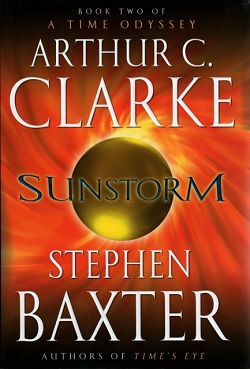
Sunstorm is a 2005 science fiction novel co-written by British writers Arthur C. Clarke and Stephen Baxter. It is the second book in the series A Time Odyssey. The books in this series are often likened to the Space Odyssey series, although the Time Odyssey novels ostensibly deal with time where the Space Odyssey novels dealt with space. The first book in the series was Time's Eye.
Acorna is a "Unicorn Girl", a fantasy fiction character created by Anne McCaffrey and Margaret Ball in their novel Acorna: The Unicorn Girl (1997).
Elemental Masters is a fantasy series by American writer Mercedes Lackey, taking place on an alternate Earth where magic exists. The series largely focuses on Elemental Masters, people who have magical control over air, water, fire, or earth. Each elemental master has power over elementals, as well. Each book in the series is loosely based on a fairy tale.
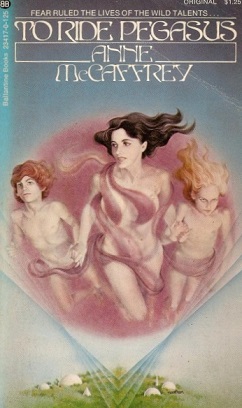
To Ride Pegasus is a collection of four science fiction stories by American writer Anne McCaffrey, published by Ballantine Books in 1973 and later under its Del Rey imprint. "To Ride Pegasus" is also the title of the novella, the first of the four stories that was original to the collection.
The Overmind is a fictional character appearing in American comic books published by Marvel Comics.
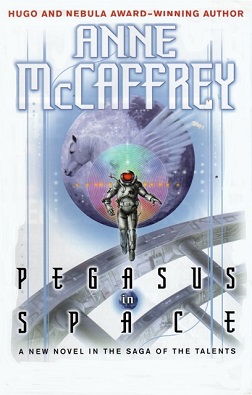
Pegasus in Space (2000) is a science fiction novel by American writer Anne McCaffrey, set in her "Talents Universe" series. It is the sequel to Pegasus in Flight and it completed a trilogy initiated in 1969.
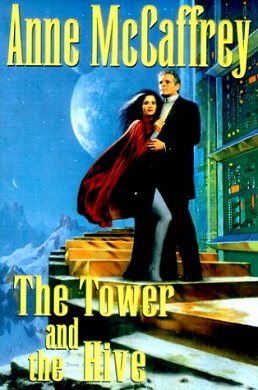
The Tower and the Hive is a 1999 science fiction novel by American writer Anne McCaffrey, the concluding volume of a five-book series also referred to as The Tower and Hive series.
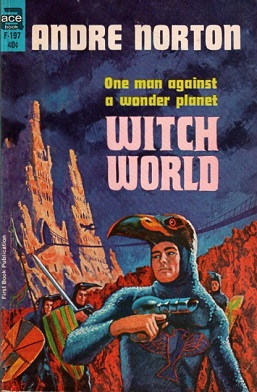
Witch World is a science fantasy novel by American writer Andre Norton, published as a paperback original by Ace Books in 1963. It inaugurated the Witch World series and established a setting that she eventually shared with other writers.
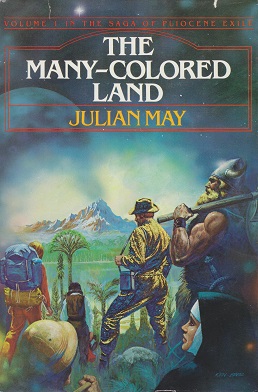
The Many-Colored Land is a science fiction novel by American author Julian May, published in 1981. It is the first book of the Saga of Pliocene Exile. The novel sets the series up by introducing the story of each of the characters. The main purpose of the book is to provide information for the rest of the series, only beginning the main storyline in its final part.

The Legion of Space is a science fiction novel by the American writer Jack Williamson. It was originally serialized in Astounding Stories in 1934, then published in book form by Fantasy Press in 1947 in an edition of 2,970 copies. A magazine-sized reprint was issued by Galaxy in 1950, with a standard paperback following from Pyramid Books in 1967. The first British edition was published by Sphere Books in 1977. The Legion of Space has been translated into German, French, Italian and Japanese . It has also appeared in the omnibus Three from the Legion, which compiles the novel and all but one of its sequels.
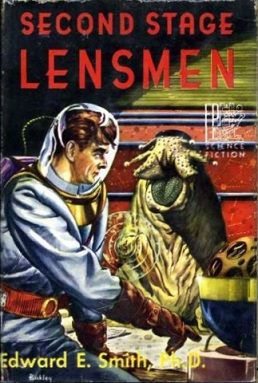
Second Stage Lensmen is a science fiction novel by author Edward E. Smith. It was first published in book form in 1953 by Fantasy Press in an edition of 4,934 copies. The novel was originally serialized in the magazine Astounding beginning in 1941. Second Stage Lensmen is the fifth volume in the Lensman series, and the last to feature Kimball Kinnison as the most powerful Lensman in the service of the Galactic Patrol. Second Stage Lensmen also features the first female Lensman, Clarissa MacDougall. The story mainly focuses upon the exploits of the "Second Stage" Lensmen: those who have gone through the advanced Arisian training Kinnison underwent in Galactic Patrol. These four superior Lensmen, Kinnison, Worsel, Tregonsee, and Nadreck, are armed with mental powers allowing them to control the minds of others and see, hear, and feel without using their physical senses. This elite cadre allows Civilization to tip the balance against Boskone as Second Stage Lensmen abilities are ideally suited to spying and information gathering.

The Silkie is a fix-up science fiction novel by Canadian-American writer A. E. van Vogt, first published in complete form in 1969. The component stories had previously been published in Galaxy Science Fiction magazine.

Across the Universe is a trilogy of young adult science fiction novels written by American author Beth Revis. Chronicling the life of Amy Martin aboard a generation ship hundreds of years in the future, Across the Universe, the first novel published in 2011 by Razorbill, received a starred Kirkus review and made the New York Bestseller List for Children's Chapter Books.

Time Is the Simplest Thing is a science fiction novel by Clifford D. Simak, first published in 1961. The story combines paranormal abilities with themes of space and time travel. The underlying theme is intolerance of ordinary people towards those with unusual abilities.















